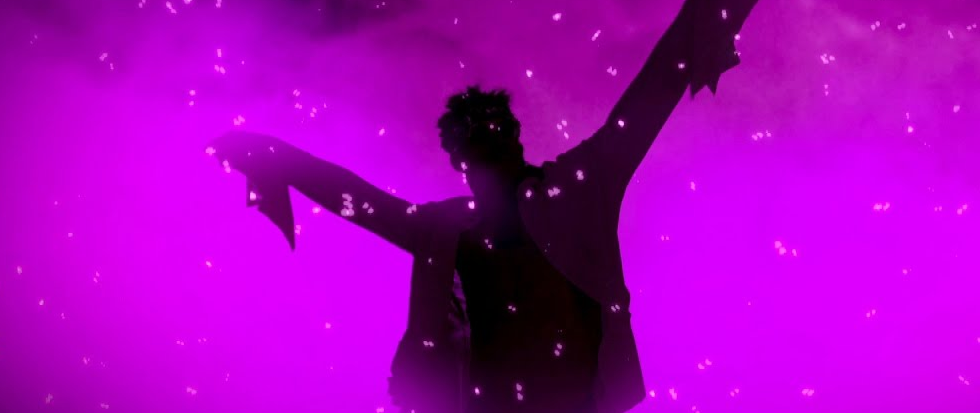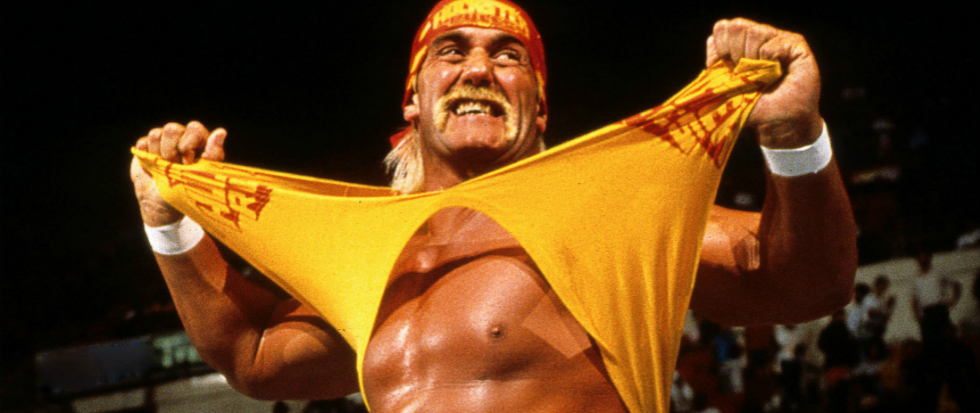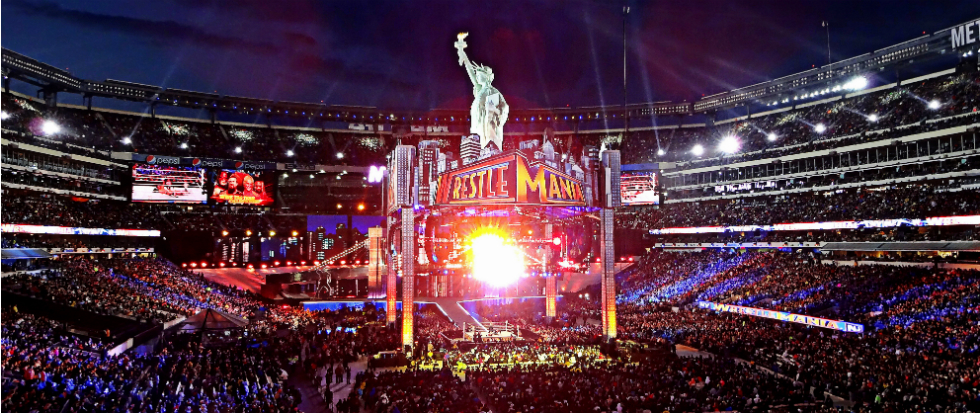
How Wrestling is Embracing New Masculinity
There is an infamous moment in Grant Morrison and Dave McKean’s original Arkham Asylum, in which The Joker gropes Batman.
In 2017, the idea that Batman is dark, gritty, and “not for kids, man” has become a joke in and of itself, but back in 1989, Arkham was pretty much the gold standard for edgy Batman comics. It had gore, sexual assault, heavily implied pedophilia, and enough disturbing imagery to ruin the character for anyone too young to stumble upon a copy. But this moment – a scene wherein Batman violently lashes out in response to Joker’s homoerotic advances – was not simply played for cheap shock value.
At its core, the book is about Joker holding a mirror up to Batman. Bruce Wayne believes in his own sanity, but The Joker wants him to realize that, deep down, he’s just as crazy as the rest of the inmates. One man dresses up as a bat and punches people, the other dresses up as a clown and blows up hospitals. They might fall on opposite sides of the battlefield, but both are fighting the same war with their own past trauma.
The ‘groping scene’ says a great deal about both characters. The Joker is sexually frivolous and aggressively homoerotic, whereas Batman is repressed, and almost painfully heterosexual (ironic, given that so many Batman in-jokes would come to revolve around his heavily implied romantic relationship with sidekick Robin). This offered a window into the sexual dichotomy of Batman and his greatest foe, but it also feels like a skewed response to the increased prominence of gay culture throughout the 1980s. Remember: Batman is still the good guy, so Joker’s homosexuality, however disingenuous, is automatically coded as somewhat villainous by default.
Pop culture has often stuck doggedly to these black and white depictions of sexuality, and pro-wrestling has historically been one of the worst and most frequent offenders. But this appears to be changing.
In the year 2017, professional wrestling found its Batman vs Joker, and the resulting reaction within the wider wrestling community has been fascinating to see.

Wrestling’s track record with portraying homosexuality (particularly within WWE) has been non-existent at the best of times, and downright abysmal at the worst. Gay or effeminate men have almost always been portrayed as heels, or as comedy characters seen as too weak to accomplish anything worthwhile in the ring. This is symptomatic of the industry’s longstanding attitude towards women and femininity, which until recently could be boiled down to: “Men are strong, women are hot, and never these wires shall cross.”
Characters like Santino or Vito were ridiculed for wearing drag, Rico was a joke character based on stereotypes around male hairdressers, and Chuck and Billy’s gimmick literally revolved around a fake-out gay marriage designed to generate nuclear heat from the fans. When legitimately gay wrestlers like Darren Young work in WWE, their sexuality is never mentioned, and the idea of ever seeing a serious gay relationship under Vince McMahon has seemed impossible for as long as the company has existed.
WWE conditioned its fans to hate gay men, or at least harnessed lingering institutionalized homophobia in order to create villains. So when fans were first introduced to ‘The Velveteen Dream’, NXT hopeful Patrick Clarke’s newest character, people weren’t exactly optimistic about how he would be portrayed.
Dream’s name was clearly a sly play on Dusty Rhodes’s moniker, ‘The American Dream’, with all the blue collar niceties intentionally replaced with effeminate smugness and Prince-like swagger. He waltzed out to the ring, oozing with charisma, and put in some great performances against NXT’s resident enhancement talent. But it wasn’t until he met his arch-nemesis, that he started to seem like more than just another cheap, gay panic throwback.
Every Joker needs a Batman, and The Velveteen Dream found his in Aleister Black, a stoic, unfeeling warrior from Amsterdam, Netherlands. Rather fittingly, Aleister only wears black (or sometimes really dark grey), and trudges to the ring to the sound of haunting choral punk. Tattoos cover his body from head to toe, and his mysterious, enigmatic demeanor belies some of the most brutal strikes in modern professional wrestling.

The Velveteen Dream just wanted Aleister to notice him. He just wanted Aleister Black to “say his name.”
Whoever decided to pair Dream and Black stumbled upon a feud for the ages. Not only was it entertaining as hell, it managed to tell a fresh and interesting story without the two men so much as touching. In fact, their lack of physical contact was one of the most important narrative devices within this rivalry. I’m talking, of course, about the kiss that never was.
This was the moment that took this feud from a potential misfire, to one of, if not the most exciting thing on a stacked NXT roster. Aleister broke his long silence to the NXT crowd, decked out in a sharp suit and ready to reveal some home-truths about why he’d come to WWE/NXT. He was interrupted by Dream, who announcer Mauro Ranallo astutely proclaimed was “the polar opposite of Aleister Black.”
“Aleister, where are your scars?” Dream asked, practically undressing the former indie darling with his eyes. This would normally be the part where Dream would be cut down with a volley of boos from the audience; how could he have the gall to be so overtly gay in a wrestling ring, when everyone knows wrestling is the straightest sport on the planet?
But rather than derision, Dream’s advances were met with an odd mixture of boos, cheers, murmurs, whoops and wolf-whistles. This cocktail of sounds built and built, resulting in a huge ‘pop’ as Dream continued: “You look afraid to me. You seem afraid to show emotion. Most importantly, you’re afraid of the light. No matter what you tell anyone Aleister, I know you have a heart… It’s just in the wrong place.”
At this assertion, Black violently kicked the microphone from Dream’s hand, delivering a warning shot, a precursor to his signature ‘Black Mass.’ Black sat down, but instead of running away, Dream crawled towards him, getting so close to his face that a kiss seemed almost inevitable. The crowd erupted into a frenzy, a frenzy that suggested they were seeing something they had never seen before inside of a WWE ring: a gay-coded character with actual depth.

Just like Batman’s rivalry with The Joker, this feud has been about so much more than silly costumes and cartoonish punching. Dream vs Black was multi-faceted and complex, and it bucked traditional gender boundaries and face/heel alignments as a result. Sure, Dream is a narcissist who attacks other wrestlers from behind, but his intentions here were actually somewhat virtuous. Black, on the other hand, is a badass fighter with significant fan support, but his violent reaction to Dream’s assertion that his “heart is in the wrong place” (read: “you act so straight, there’s no way you really could be”) suggests that he is insecure and emotionally repressed.
So we have two combatants: a smug narcissist who is completely at ease with his sexuality, and wants to help his opponent come to terms with his own emotionality, and an unfeeling stoic who would rather shut the other man down and shy away from him, than attempt any kind of introspection. Dream was desperate for Black’s attention, because he wanted him to see that, just like superheroes and supervillains, pro-wrestlers are just weirdos in costumes, regardless of their motivations.
Within the much broader pro-wrestling community, The Velveteen Dream represents a shift that has been a long time coming. Perhaps it’s down to the quality of his character, the more progressive times in which we live, or the gusto with which Clarke cuts every promo, but whatever the reason, Dream is almost an entirely new concept within the realm of mainstream “sports entertainment”.
He, along with Breezango and British pansexual indie wrestler Jack Sexsmith, are demonstrating that displaying traits “the business” would have once wrongheadedly derided as “gay” or at least feminine, don’t have to make you a ‘bad guy’ within the fiction of pro-wrestling. Breezango might have surged in popularity for their hilarious crime fiction parodies, but their gimmick is still heavily rooted in male sexiness and over-the-top narcissism. They care about their looks, and want to stop others from committing fashion faux pas.

Sexsmith, on the other hand, is proudly pansexual, so much so that he even incorporates it into his wrestling persona.
Such characters have existed before within pro-wrestling, but if they haven’t been played for laughs or boos, they have only operated on low-level indies, unable to attract the kind of mainstream attention of even WWE’s developmental third brand.
As is the case with Batman and The Joker, Dream’s sexuality is only implied. He has yet to pick up a microphone and declare to the WWE Universe: “I’m gay.” Even openly gay wrestlers like Pat Patterson and Darren Young never incorporated their real-life sexuality into storylines.
It’s entirely possible that Patrick Clarke, the man behind the Dream, is as straight as an arrow, or that The Dream himself simply uses homoeroticism as part of some elaborate ‘mind games’. Take a look at social media reactions to the Dream, and opinions are somewhat split. Some think him a ground-breaking and sexually revolutionary character, while others see his Prince-like gimmick as merely an ode to one of our late musical greats. But regardless of the sexuality of either Clarke or his character, The Velveteen Dream is reshaping masculinity within wrestling, just as Prince and Bowie did for the music industry.
He is a living, walking embodiment of the idea that men can be sensitive, men can be emotional, and men can be flamboyant. They can wear their hair in over-the-top ways and wear purple, satin blouses. They can flirt with other men, and swing their hips to the beat of their own drum.
Perhaps the most reassuring thing about The Velveteen Dream’s rise to prominence is that it isn’t falling on deaf ears. His feud with Aleister Black has been eaten up by NXT’s faithful, and while there’s always room for things to go wrong on the main roster, there’s still plenty of scope for his character to grow in Florida.
When the two fighters (potentially) put their feud to bed at NXT TakeOver: WarGames, they did so in a star-making bout filled with excellent pro-wrestling and exquisite storytelling. Knowingly playing to the fan-fiction-esque groundswell of support that had grown around the feud, Dream came to the ring wearing tights emblazoned with his and Aleister’s faces, cleverly referencing Rick Rude’s ‘Cheryl Roberts’ tights, which Rude himself wore to get under the skin of Jake ‘The Snake’ Roberts back in 1988.
Although both men were cheered throughout, Dream was roundly seen as the fan favorite, despite his traditional status as a narcissistic heel. The Houston crowd was almost jeering Aleister to “say his name”, hoping that this rivalry would end in some showing of mutual respect. Much to their delight, a victorious Aleister earned the “pop” of the night, sitting next to his fallen opponent to console him after a grueling contest: “Enjoy infamy, Velveteen Dream.”

He said his name.
In a backstage interview after the match, Dream was asked for his thoughts on such a disappointing loss. Dream could only express shock and delight that his bitter rival had finally “said his name.” There were no losers in Dream vs Black, only winners.
Some online commentators have compared Dream to a millennial Goldust, a character who made significant waves throughout the 1990s for his portrayal of a gold-painted, overtly sexual blend of kink iconography and late 20th century gay panic. But where Goldust was feared and derided by fans for daring to make them question their conservative outlooks on sex and sexuality, The Velveteen Dream has been embraced by an audience that seems to be more comfortable with such subject matter.
Thinking back to the state of professional wrestling as little as five years ago, it’s hard to imagine that a character could tie another man up in the ring ropes, slap him around, and yell “say my name” in his face, and be cheered for doing so.
Perhaps WWE’s growing audience of women has made such a storyline more viable, or perhaps we as a pro-wrestling culture have simply grown tired of WWE’s endless parade of sexless, cardboard cut-out bodybuilders. As crazy as it might have sounded only a few years ago, the modern pro-wrestling fan is likely to find far more comfort and liberation in the new masculinity of The Velveteen Dream, than they are in the heteronormativity of a Randy Orton or John Cena.

As Joker tells Batman in Arkham Asylum: “Loosen up, tight ass”, so too has The Velveteen Dream attempted to loosen Aleister Black. In a way, he’s made us all more open to new portrayals of masculinity and femininity in pro-wrestling, and that can only be a good thing.
We’re still a long way off seeing positive queerness and openly gay characters within a WWE ring. On a recent episode of Chris Jericho’s podcast ‘Talk is Jericho’, recently released former WWE writer and current indie wrestler Jimmy Jacobs (who goes by the moniker ‘Zombie Princess’) spoke of not being allowed to wear dark eye makeup while working backstage, and feeling as though he had to tone down that side of his persona in order to fit in. But while there’s still progress to be made, The Velveteen Dream may well serve as the point of genesis for such a dynamic shift.
If there was any doubt about the character’s legitimacy, the Dream’s entire outlook was perfectly surmised on the man’s Twitter account:
“Boys can use Make Up
Girls can be Violent
Boys can like Fashion
Girls can be good at Sports
Boys can be Thin
Girls can be Muscular
WE CAN. “





